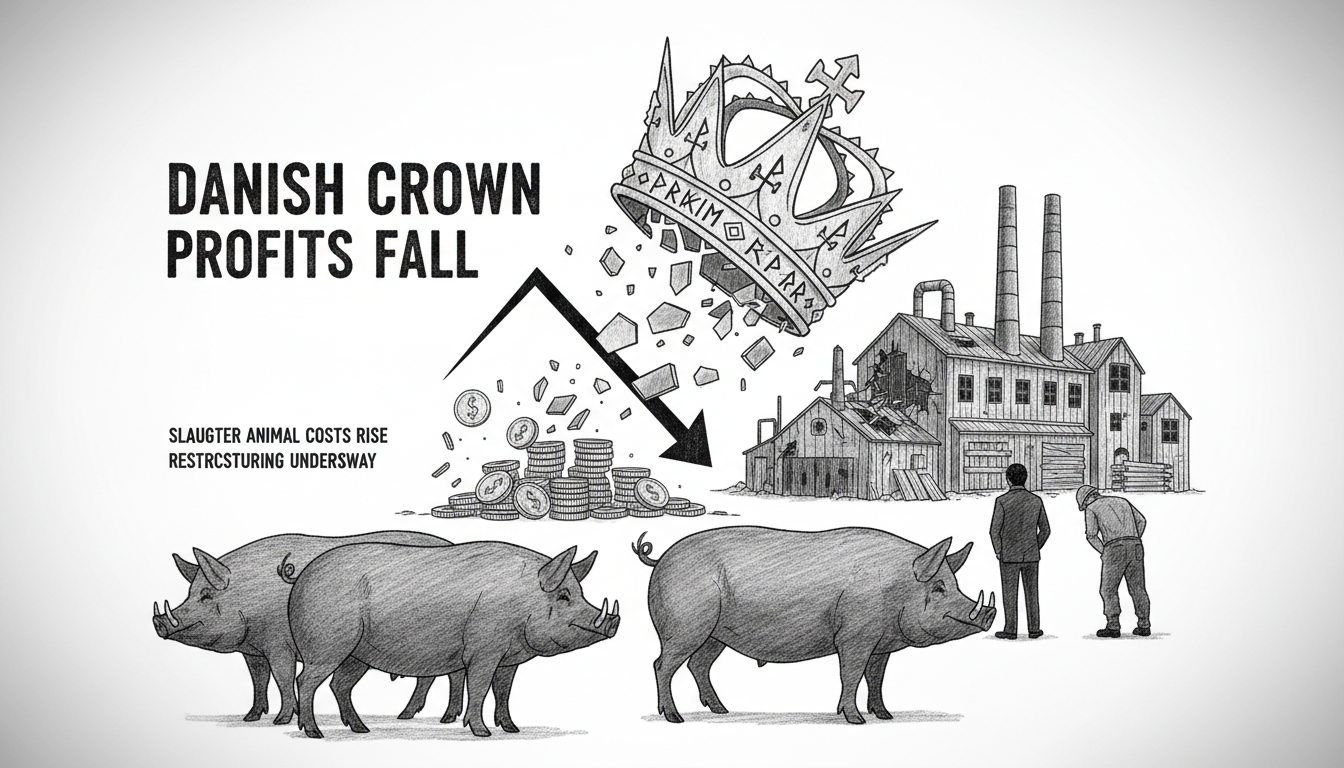Danish Crown's profits dropped by a quarter billion kroner as higher payments to pig producers squeezed margins. The meat processing giant reported earnings of 788 million kroner for the period ending in September, down from over one billion kroner during the same period last year. Revenue also declined from 67.8 billion kroner to 65.4 billion kroner. The company's co-owners delivered ten percent fewer slaughter animals, creating significant operational challenges.
The profit decline stems from Danish Crown's decision in May to increase payment rates for both pigs and cattle. Since implementing higher payments, the company has sent nearly 600 million kroner in additional funds to its co-owners. This strategic move aimed to retain suppliers who had been sending animals abroad for better prices. The company had struggled to match international payment rates offered to pig producers in recent years.
Danish Crown has faced substantial headwinds in its core operations. Millions of pigs that previously went through Danish slaughterhouses have been exported instead. This shift forced the company to implement drastic cost-cutting measures. Danish Crown closed multiple slaughter facilities and eliminated hundreds of positions to manage the financial pressure. The company described this period as a crisis requiring fundamental restructuring.
New CEO Niels Duedahl took leadership in September and immediately launched a recovery plan. He divided the business into three separate units under a new corporate structure. Duedahl expressed satisfaction with what he called 'increased competitiveness' but acknowledged ongoing challenges. 'We are in a much better place than we were a year ago, but we still have much work ahead before we have definitively put the crisis behind us,' he commented on the financial results.
The company achieved better balance between payments to co-owners, operational costs, and slaughterhouse capacity utilization. However, Duedahl emphasized the need for further earnings improvement. 'It is important that we strengthen our earnings further so we can both pay a competitive price for our co-owners' raw materials and develop Danish Crown,' he stated.
Despite the overall revenue decline, higher retail meat prices provided some positive momentum. When measured per kilogram of meat delivered, the company actually saw revenue growth. This indicates that consumer pricing strategies have helped offset some volume challenges. The Danish meat processing sector faces ongoing pressure from international competition and changing supply chain dynamics.
What does this mean for Denmark's agricultural exports? Danish Crown represents a critical component of the country's food production system. The company's restructuring efforts reflect broader challenges in European meat processing. Many traditional slaughter operations struggle with rising costs and international competition. The success of Danish Crown's recovery plan will influence Denmark's position in global meat markets.
The company's focus now shifts to maintaining supplier relationships while improving operational efficiency. The balance between paying competitive rates to co-owners and maintaining profitable operations remains delicate. Industry observers will watch closely how the new three-unit structure performs in coming quarters. The changes represent one of the most significant reorganizations in Danish Crown's recent history.

